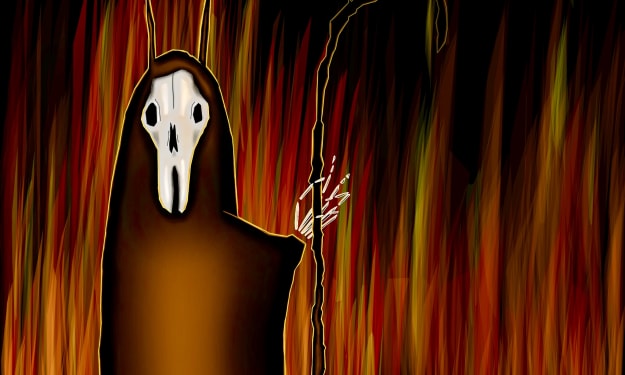Trauma Part Four
My Journey Through PTSD Treatment

Please click this link to read preceding articles.
Plateau
For a while I felt stuck. I didn’t feel like I was getting better. The anxiety that lives in my chest is still ever-present. I was talking to Saya, my therapist, about a lot of things that were happening currently instead of digging into my past. I felt I made significant mistakes. I should have cut all ties with anyone connected to my ex, but I just couldn’t pull the trigger with some friends I’d made. They didn’t do anything wrong and I had relationships with them outside my ex. But realistically, I’ll never see them again. Maintaining any connection to my ex is distressing, but so is the thought of cutting ties.
I started dating and it was too soon. I’m still triggered easily, and by strange things, like emotional intimacy or any kind of openness. I’m paranoid and hypervigilant. I read into things that are probably not there. I could be interacting with the most genuine person in the world and I would still suspect him of wearing a mask or trying to manipulate me. If I reveal anything about myself that makes me feel vulnerable, I feel like I’ve said too much. If I hold it in, I feel dishonest. Asking for what I need, even small things like acknowledgment, makes me feel like a needy, crazy mess. I was punished for so long for having bad days that I just shut down instead of talking about it. It feels like a confession—admitting when I’m struggling.
But life must go on. I can’t isolate in my house and avoid relationships because I’m stuck in a state of trauma. Saya says that mistakes are an opportunity to reevaluate your path. It’s ok to stumble. We were delving into incidents in my relationship with EMDR before I started living my life again, and it felt like too much. On a 1-10 scale of distress, twos and threes felt extremely difficult. I needed more time. I needed to go farther back in time.
Trauma Master Series
I recently completed a seven week masters course in trauma, featuring leading experts on trauma such as Dr. Bessel Van Der Kolk, author of The Body Keeps the Score, and hosted by Ruth Buczynski, licensed psychologist and president of The National Institute for the Clinical Application of Behavioral Medicine.
Only 20 percent of people who experience some form of trauma also experience PTSD. Adverse childhood experiences (ACEs) are linked to predisposing a person to developing PTSD after experiencing trauma later in life. Abuse, neglect, and childhood trauma increase the risk of PTSD. Dissociation, a psychological state where a person feels disconnected, numb, and outside their body, is a common defense mechanism for dealing with trauma, but can be traumatizing in and of itself. Dissociation is significantly predictive of developing PTSD because it leaves a person feeling helpless, unable to fight back, and like they can’t trust their own experiences. It impairs a person’s ability to integrate emotions and experiences, leaving them trapped in a state of stress and hypervigilance. Had I not journaled my traumatic experience, it would still be repressed.
An Adverse Childhood Experience
Using EMDR, Saya helped me access a memory from when I was about two-years-old. I was at my babysitter’s house, in one of those mesh playpens, in a room alone with the door closed. I remember the room with 80s colors. I remember the sickly afternoon winter sunlight streaming through the window and lighting up the dust particles floating in the air. I cried beyond the state of exhaustion, and although I didn’t have the words, I was begging myself to stop. I was frustrated with myself. Why couldn’t I stop?
It wasn’t my responsibility to comfort myself. I was a baby. A caregiver should have been there. Babies need their caregivers to provide comfort so they can learn healthy attachment and so they can eventually learn to self-soothe and properly integrate feelings and events. Something went wrong for me. I started seeing therapists and psychiatrists in high school, and they all assumed I was molested. I have no reason to believe I was molested. Based on that memory and my history of mental illness and disorganized attachment, I believe this was not a singular incident. I think I spent a lot of time crying alone in that room. I remember the relief I felt when my parents picked me up in the evening.
It’s not resolved for me yet, but Saya led me to the point where I, as an adult, comforted myself as that crying baby.
“She’s still there,” said Saya, “waiting to be picked up.”
Next time I see Saya we’ll work on putting that memory in my container, so maybe it will at least feel resolved as I continue to work on my ability to integrate and form healthy attachments.
About the Creator
Hecate Jones
I have a degree in psychology. I’m an author and an artist who has experienced trauma and I’m living with Mast Cell Activation Syndrome. I have interest in numerous topics and enjoy research.






Comments
There are no comments for this story
Be the first to respond and start the conversation.